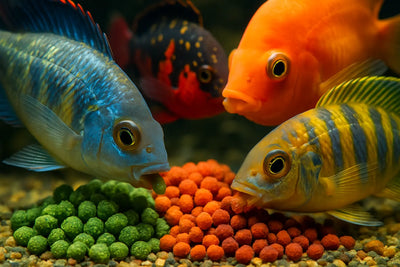Blog result Reptile Behaviors
SUBHEADING
Blog posts
Halogen Heat Lamps for Reptiles: What to Know for 2025
Halogen heat lamps are becoming a go-to choice for reptile owners looking to create the right environment in enclosures. These...
The Ultimate Guide to Fish Food: Everything You Need to Feed Your Aquarium Right
Fish food is essential for the health and vitality of your aquatic pets. But what exactly makes fish food right...
How to Choose the Perfect Dog Deshedding Tool for Your Furry Friend
Understanding Different Types of Dog Deshedding ToolsFinding the right deshedding tool for your dog can transform grooming from a dreaded...
Hexagon Tarantula Enclosure: The Ultimate Home for Your Exotic Pet
IntroductionExotic pet enthusiasts understand that providing the right habitat is crucial for the health and happiness of their unique companions....







